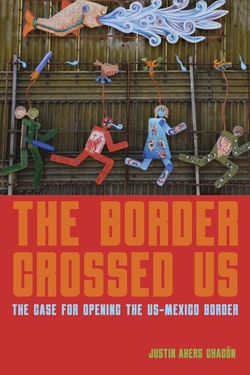I first remember hearing about the North American Free Trade Agreement (NAFTA) in 1990. It was during a conversation with a Postal Union steward in Washington state. We were probably at a tavern in Olympia drinking pints of Rainier. Soon, I began to hear about this potential treaty in many other venues. Not being particularly knowledgeable about the nuances of international trade, I started finding out as much as I could about this potential compact between the capitalist classes of Canada, Mexico, and the United States. The more I read and talked with people about it, the more it became clear that, should this agreement go into effect, the working people of these three nations were in even greater trouble than they already were.
Over the course of the next two years, unions in all three countries organized opposition to NAFTA. By the time Bill Clinton was elected president in November 1992, most people had at least heard of the agreement. Many Democrats had come out in opposition to it and Clinton pretended he was one of them. As it turned out, he wasn’t and NAFTA passed into law in 1994. Most of what the opposition predicted would happen, did. Wages fell in the United States, small farmers in Mexico saw the value of their crops drop, US corporations moved into Mexico, and Mexicans who had lost their livelihoods began heading to the US in great numbers. These are but a few examples of how NAFTA changed the economies of North America.

Of course, NAFTA is not the sole reason for the situation working people in North America find themselves in. Numerous other causes exist; some were foreseeable outgrowths of capitalism’s ongoing crisis while others—like COVID-19—were not. Likewise, not all workers in all three nations have experienced this crisis in the same ways. It seems fair to state that it is the Mexican working class and small farmers who have suffered the most. Forced to migrate to cities or the United States in order to find work, these people’s very lives end up criminalized. Sneaking across harsh terrain surveilled by high-tech machinery and often brutal police agencies, these migrants are also looked upon as prey by unscrupulous coyotes, drug traffickers and just plain criminals. Should they make their way across the US southern border alive, they often end up in detention camps filled with stories of abuse, neglect, and sickness. The brutality required to keep borders closed to human beings is both graphic and appalling beyond belief.
Meanwhile, money and goods move effortlessly, their paths back and forth across borders smoothed over by laws designed to encourage this traffic, corruption, and the sheer power of the global capitalist machinery. This deadly contradiction of the capitalist trade infrastructure has been written about many times, especially its place in the relationship between Mexico and the United States. Few writers, however, have covered it as explicitly and concisely as scholar Justin Akers Chacón does in his most recent work, The Border Crossed Us: The Case for Opening the US-Mexico Border.
Although it opens with a chapter discussing the colonial origins of the concept of free trade, The Border Crossed Us is essentially an economic and political history of Mexico after the revolution of 1910 when, after all was said and done, the Mexican economy became an economy dominated by the capitalist class which managed jointly with the state. This system nationalized the oil industry and put controls on the banks and foreign investment but never eliminated the primacy of profit. Only official unions were recognized and land reform was intermittent at best, with many large landowners maintaining most of their holdings. In reaction to pressures from the United States and local capitalists, the Mexican government’s role under the decades-long rule of the Partido Revolucionario Institucional (PRI) became one of appeasing Mexico’s capitalist class. It seems fair to say that, ultimately, the capitalist class came out on top. The privatization of most of the economy is complete; foreign—mostly US—investment is dominant and the accumulation of private wealth among a few individuals is comparable to similar accumulation around the world. The implementation of NAFTA was crucial in this development. One example of this which more than proves this is that before NAFTA Mexico had one billionaire. Now it has at least twenty-three. Meanwhile, impoverished thousands risk their lives to make it to a land that wants their labor but not their actual presence. Many of those thousands would not be taking such risks if their nation’s economies had not been made supplicant to that of the United States.
It is this contradiction that Akers Chacón addresses throughout the text, but especially in the final section titled “The New Movement Against Borders.” This chapter is both a history of the movement for the free movement of people across borders and the beginning of an organizing manual. Citing abuses of migrants by the border patrol and ICE and instances of successful actions against those abuses, Chacón ends his text with a note of hope. Hope in the power of the people and their solidarity against those who consider workers on all sides of the border as entries in their accounts ledgers at best.